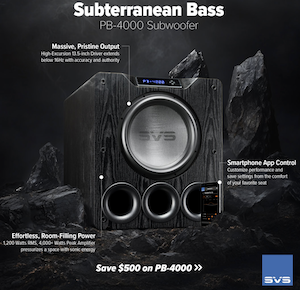jtalden
Senior Member
More
- Preamp, Processor or Receiver
- Marantz AV7705 Pre/Pro
- Main Amp
- VTV 6 chnl NC252MP P-amp x 2
- Additional Amp
- Behringer DCX2496 x 2
- Universal / Blu-ray / CD Player
- OPPO BDP-103 Universal Player
- Front Speakers
- DIY SEAS H1456/H1212 Spkr x 5
- Subwoofers
- DIY JBL 2235H 15" SW x 2
- Screen
- Da-Lite Da-Snap 39105V - 92"
- Video Display Device
- JVC DLA-X790R
I have no better insight as to what is best than you do. The advantage of this process is that you can now see exactly what is going on in this range and decide what alignment(s) you want to try out.
Here are my thoughts however in case you find them useful:
> Sub Polarity - Yes, the Sub is negative polarity. [FYI - The impulse peak reflects the highest frequency being measured; in this case 500 Hz. If the Sub is still in its passband then using the impulse chart is fine for this decision. If the Sub is well into its stopband and has a steep lowpass filter active then it may be misleading. It is better to look at the step response or the phase response.]
> Polarity to use - Your choice. Good alignments can be found either way. With an acoustic LR-24 or LR-48 XO setting both polarities positive is the alignment that is correct. As the acoustic filters often deviate from the ideal rolloff either setting may work as well. With enough deviation a better fit may be found with one driver reversed. The electrical filters chosen often do not provide the target acoustic shape.
> Direct sound or steady-state alignment - I initially find the best direct sound alignment and see how well it works for SPL. I also reverse polarity on the Sub and the reduce the delay of the sub (increase mains delay in this case) ~1/2 wavelength to find the best direct sound timing (~5 ms delay shift in this case). If the SPL support is good, I would use one of these 2 alignments. With room effects impacting phase at the LP and L vs R differences there are often other settings that in this range that provide as much
(or possibly more?) SPL support. These would all be good settings in my opinion. I am reluctant to shift the delay outside of this 5 ms range. We could find good SPL support with additional 1/2 wavelength increments, but the group delay offset starts to be excessive.
> Sub Position - Always a good consideration. Also a second sub to match the one you have may help a lot.
> XO frequency - Don't be reluctant to try a 120 Hz XO and see for yourself if there is distraction. With an acoustic LR-24 100 Hz XO I have no distraction. Others indicate they do. They may be more sensitive or may be they have more leakage higher into the mid bass, or possibly their room acoustics are different. It really only matters what you find in your case.
Here are my thoughts however in case you find them useful:
> Sub Polarity - Yes, the Sub is negative polarity. [FYI - The impulse peak reflects the highest frequency being measured; in this case 500 Hz. If the Sub is still in its passband then using the impulse chart is fine for this decision. If the Sub is well into its stopband and has a steep lowpass filter active then it may be misleading. It is better to look at the step response or the phase response.]
> Polarity to use - Your choice. Good alignments can be found either way. With an acoustic LR-24 or LR-48 XO setting both polarities positive is the alignment that is correct. As the acoustic filters often deviate from the ideal rolloff either setting may work as well. With enough deviation a better fit may be found with one driver reversed. The electrical filters chosen often do not provide the target acoustic shape.
> Direct sound or steady-state alignment - I initially find the best direct sound alignment and see how well it works for SPL. I also reverse polarity on the Sub and the reduce the delay of the sub (increase mains delay in this case) ~1/2 wavelength to find the best direct sound timing (~5 ms delay shift in this case). If the SPL support is good, I would use one of these 2 alignments. With room effects impacting phase at the LP and L vs R differences there are often other settings that in this range that provide as much
(or possibly more?) SPL support. These would all be good settings in my opinion. I am reluctant to shift the delay outside of this 5 ms range. We could find good SPL support with additional 1/2 wavelength increments, but the group delay offset starts to be excessive.
> Sub Position - Always a good consideration. Also a second sub to match the one you have may help a lot.
> XO frequency - Don't be reluctant to try a 120 Hz XO and see for yourself if there is distraction. With an acoustic LR-24 100 Hz XO I have no distraction. Others indicate they do. They may be more sensitive or may be they have more leakage higher into the mid bass, or possibly their room acoustics are different. It really only matters what you find in your case.








 .
.



